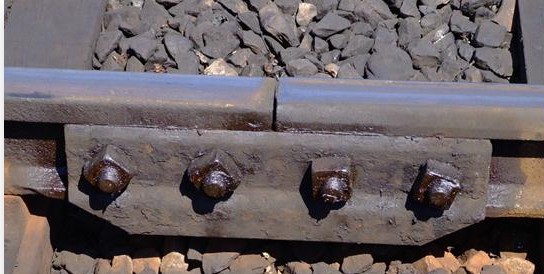 A fish-plate is a metal or wooden plate that is bolted to the sides at the ends of two rails. Derived from the French word ‘Fiche’ – which means a Peg, or ‘Fichier – which means to fasten, thus a fish-plate means a plate that fastens. In railway terminology, a fish-plate is a metal bar that is bolted to the ends of two rails to join them together in a track.
A fish-plate is a metal or wooden plate that is bolted to the sides at the ends of two rails. Derived from the French word ‘Fiche’ – which means a Peg, or ‘Fichier – which means to fasten, thus a fish-plate means a plate that fastens. In railway terminology, a fish-plate is a metal bar that is bolted to the ends of two rails to join them together in a track.
It is true, in railways, if the quality of the fish-plate is poor, the caused consequences would be unimaginable. Many accidents have been attributed to “Fish-plates”. A story in leading national daily while reporting on recent rail accident of Indore-Patna Express, also attributed one of the causes of accident as corrosion of “Fish-plates”.
Not just the Fish-plates, even the bolts need protection, protection from corrosion.
Experts have estimated losses of almost 4 per cent of GDP per year on account of corrosion which may be avoided if the railway tracks are galvanized.
International Zinc Association advocates, “Indian Railways requires corrosion-free tracks in case India is considering Bullet Trains. The entire change would not only be cost effective but India would also be the first country to initiate such step towards passengers safety. One of the significant aspects of railway track maintenance is the detection of corrosion and the replacement of corroded rails. The rails have a life of 800 gross million tons, which works to approximately 12-13 years under normal traffic conditions in India. Corrosion reduces the life of rail to nearly half its expected life.”
India’s rail tracks, spanning 115,000 km, happen to be the world’s third largest. The annual loss due to pre-replacement of corroded rails is huge about Rs 440 crore.
Needless to mention the role of Zinc, to make the rails and fish-plates last longer… Zinc coating is the key…
Let no one say… “Fish-plates are indeed Fishy !!!”
Hindustan Zinc is India’s only and world’s leading Zinc-Lead-Silver Producer..

Article by- Pavan Kaushik, Head – Corporate Communication, Hindustan Zinc


